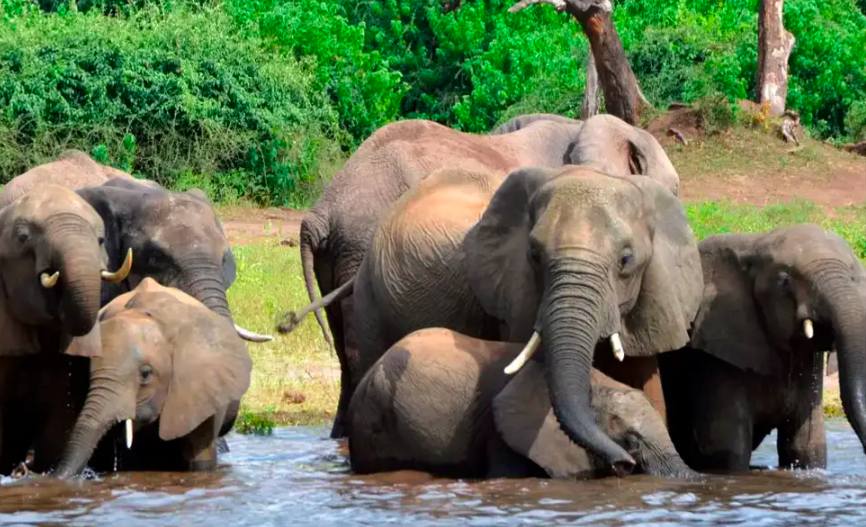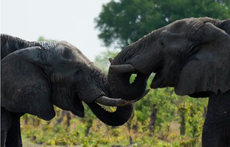Elephants are more than just the trade in ivory
Saving Africa's elephants requires us to look beyond the Convention on International Trade in Endangered Species of Wild Fauna and Flora (CITES), argues the body's former Secretary General John E Scanlon

Of the 36,000 species falling under Convention on International Trade in Endangered Species of Wild Fauna and Flora (CITES), trade controls there is one that has been the proverbial elephant in the room. An often-heated debate has raged on for decades at CITES tri-annual conferences over trade in the ivory of the African elephant, with a ban on commercial trade agreed in 1989, followed by decisions allowing two ‘one off’ sales of certain ivory stockpiles in 1999 and 2008.
After a short respite in Bangkok in 2013, when CITES Parties agreed to focus on the immediate threat posed by the surge in poaching of elephants for their ivory, the debate resumed in Johannesburg in 2016 and is set to continue in Geneva in August of this year at the next CITES conference.
There is common ground amongst African countries on the importance of conserving elephants, but a divergence on the best way to do so. Some see legal trade as the way to generate much needed financial resources for conservation and local community development, while others see any legal trade as stimulating a market that fuels illegal trade.
The theory behind legal trade, with elephants dying of natural causes, their ivory being collected and traded internationally, with the revenue going back to local communities is sound. Unfortunately, it has not worked out that way for many reasons, and in practice the international community has been unable to put into place adequate safeguards to manage the trade.
The mood of CITES Parties in recent years has not been to open trade, but to keep it closed at the international level, and they have also sought to restrict domestic ivory markets. Several proposals to effectively allow ivory trade from certain African countries in 2016 each gained less than 30 votes, well short of the required two-thirds majority. It is hard to imagine CITES 183 Parties agreeing to open ivory trade in the foreseeable future.
This presents a dilemma for some countries with elephants, especially those with large populations, as it denies them access to a sustainable source of revenue to support conservation and local development. Is it enough for the international community to block trade in ivory and the revenue it could generate, without considering other ways of accessing finance, or are we compelled to look at the issue from a wider perspective?
At its core, the debate on allowing trade in ivory is about generating the financial resources that are needed for conservation and local development. Work done by McKinsey for African Parks found that while in dollar terms it is cheaper to manage protected areas in Africa than Europe, when viewed relative to gross domestic product, it is 121 times more expensive.
CITES mandate is limited to trade-related issues, and another fractious debate on whether some African countries’ legitimate need for a reliable source of conservation finance can be satisfied by international ivory trade is unlikely to advance the core concern over access to financial resources. Put simply, the CITES debate ends with a vote on whether to open trade or not, leaving some satisfied and others disgruntled.
African countries seeking to open trade, or to keep ivory trade closed, are equally committed to conservation and face similar development challenges, including satisfying high demands on limited budgets for access to education, healthcare, electricity, sanitation and freshwater. As one African leader remarked last year, I cannot be seen to put too much money into conservation “as people will say I love elephants more than people.”
The threats to Africa’s wildlife extend well beyond CITES issues. In addition to poaching for illegal international wildlife trade, there is poaching for bushmeat and firewood, as well as loss of habitat through land-use change, largely driven by agricultural expansion, pollution, and the effects of climate change. All of this is happening against a backdrop of increasing human-wildlife conflict, with the continent’s population projected to grow from 1.2 billion today to 2.5 billion by 2050.
These factors are placing the wildlife assets that underpin development opportunities, especially through wildlife-based tourism, under severe threat. As the benefits of well-managed protected areas goes beyond wildlife, so too must the sources of funding to support them, recognising the direct links to sustainable development, adapting to and mitigating climate change and security risks.
And as these issues transcend CITES, we must find a forum where we can have a wider, more open and honest discussion on how we can tangibly and practically support African countries in meeting their wildlife conservation and local development needs, including managing large elephant populations.
This requires us to look beyond ivory and consider a longer-term, more comprehensive perspective on the multiple immediate threats facing Africa’s wildlife, as well as those on the horizon, to see how we can offer more coherent, creative and effective management and financing solutions to the countries that are home to Africa’s magnificent, yet vulnerable, wildlife.
And the time is right to do just that, as we gear up for 2020 when the international community will convene to agree upon a new biodiversity framework to 2030, more ambitious commitments to mitigate climate change, and review the progress made in achieving the UN Sustainable Development Goals, each of which is inextricably linked to the future survival of Africa’s elephants.
John E Scanlon is the Special Envoy of African Parks and was Secretary-General of CITES from 2010-2018


Join our commenting forum
Join thought-provoking conversations, follow other Independent readers and see their replies